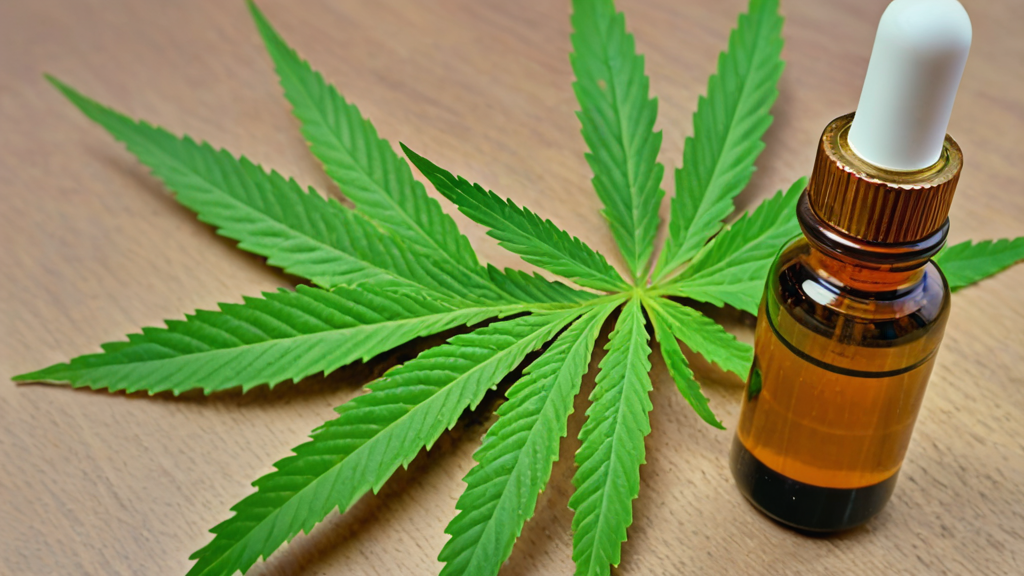Cannabidiol or CBD is one of the cannabinoids found in the medicinal plant Cannabis sativa L. and has become a very popular ingredient in products such as oils, creams, balms or anti-aging elixirs. But why has it become so famous? What properties does it really have? And most importantly, is it safe? To answer these questions, we are going to do a brief scientific review of its pharmacological effects.
CBD, a non-psychotropic bioactive compound
CBD is a natural substance that can also be obtained by chemical synthesis. Of the more than one hundred different cannabinoids that have been described in medicinal cannabis, those that have attracted the most attention due to their possible therapeutic uses are THC (tetrahydrocannabinol) and CBD.
Scientifically proven properties
Unlike THC, which is a compound with important pharmacological and psychotropic effects related to pain relief, sedation or increased appetite, CBD is not legally considered a psychotropic substance. That is, it does not significantly alter behavior, mood or perception, although it has interesting anti-inflammatory and analgesic effects.
The reason that CBD is not a psychotropic is because its affinity for the cannabinoid receptors of the human body is much lower than that of THC. However, it does act on other types of pharmacological receptors, as well as enzymes, nuclear factors and transporters. All of this has made it possible to verify its anti-inflammatory, analgesic, anti-epileptic and even anti-psychotic benefits in several studies.
With these data we could affirm that the molecular mechanisms involved and the pharmacological effects of CBD are complex, but very attractive from a scientific perspective.
Clinical studies in humans and animals
Clinical trials in humans have not been able to demonstrate that cannabidiol has anxiolytic properties, but effects on appetite or pain control have been observed. Veterinary research has also been carried out as a possible analgesic product in dogs with osteoarthritis.
Nowadays, and depending on which country we are in, we can find CBD with different regulatory statuses and in different types of products. In the case of the European Union, it is only marketed as a medicine in oral solution (Epidyolex), for the treatment of some types of epilepsy and, above all, as a cosmetic product without therapeutic indication, to be applied to the skin. Its use as a food supplement is not allowed in Spain, but it is in the United States and other countries.
Adverse effects
And what could we say regarding its safety? Used as a drug, CBD presents a large number of adverse effects derived from its mechanism of action. Any substance – whether of natural or synthetic origin – with the capacity to produce pharmacological effects on the body also has the potential to generate unwanted reactions or interactions with other medications.
Specifically, CBD can cause metabolic disorders such as decreased appetite, drowsiness, lethargy, diarrhea, irritability or even respiratory and urinary infections. In addition, it is metabolized in the liver to facilitate its elimination and interacts with receptors related to the detoxification of foreign substances. This could increase or decrease the effects of antiepileptic treatments and anticoagulant or immunosuppressive drugs, putting the patient’s health at risk.
Only through the skin
For this reason, in many countries CBD is only sold without a medical prescription as a cosmetic product to be applied to the skin, with the idea that users use it to relieve muscle or joint discomfort.
There are very different types of items: cosmetics that only contain pure CBD (also called CBD oil), broad spectrum CBD (with other cannabinoids but without THC) and full spectrum CBD (with other cannabinoids including THC). Some people misuse these products and instead of applying them to the skin, they use other routes of administration, with the risks that this entails.
It is also important to remember that the World Anti-Doping Agency includes all cannabinoids as doping substances with the exception of CBD. Despite this, athletes should be clear about which products they use and how they are administered in each case, since many of the aforementioned products contain remains or traces of other cannabinoids.
CBD, a substance with a future
In light of the latest research, CBD is a substance of pharmacological interest with possible applications in human and veterinary health, but safety issues must be further explored to also advance the regulation and legislation of this interesting molecule.
